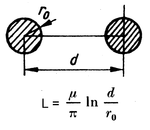mrinalmani
Advanced Member level 1
- Joined
- Oct 7, 2011
- Messages
- 463
- Helped
- 60
- Reputation
- 121
- Reaction score
- 58
- Trophy points
- 1,318
- Location
- Delhi, India
- Activity points
- 5,285
Hi!
I have a hard switched MOSFET bridge connected to a 12V 48Ah battery through 30cm long cables.
There is a single 1uf film capacitor on the PCB connected across the power rails.
The cables will have self inductance that calculates to 300nH - 500nH approximately.
The combination of capacitor and stray cable inductance should give a ringing frequency (during dead band) of 225KHz however the measured frequency is 2MHz.
This implies that the stray inductance is only around 10nH!
Am I missing something or is this a typical value of stray inductance?
Also what is the approx value of on board filer capacitors for a 12V 1000VA high frequency inverter?
Doesn't the dead band during switching cause ringing issues?
Thanks
I have a hard switched MOSFET bridge connected to a 12V 48Ah battery through 30cm long cables.
There is a single 1uf film capacitor on the PCB connected across the power rails.
The cables will have self inductance that calculates to 300nH - 500nH approximately.
The combination of capacitor and stray cable inductance should give a ringing frequency (during dead band) of 225KHz however the measured frequency is 2MHz.
This implies that the stray inductance is only around 10nH!
Am I missing something or is this a typical value of stray inductance?
Also what is the approx value of on board filer capacitors for a 12V 1000VA high frequency inverter?
Doesn't the dead band during switching cause ringing issues?
Thanks


